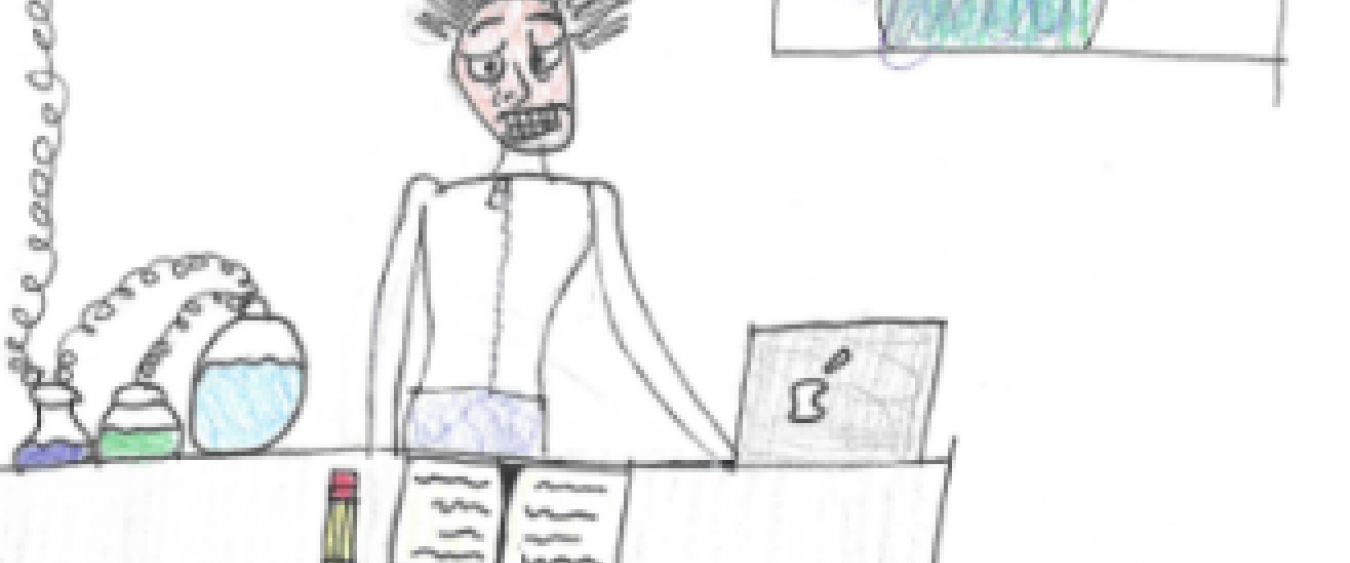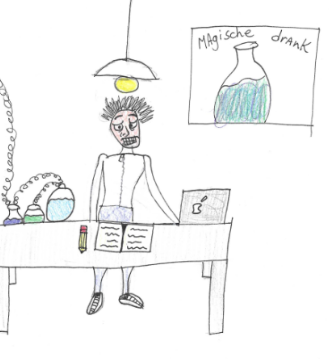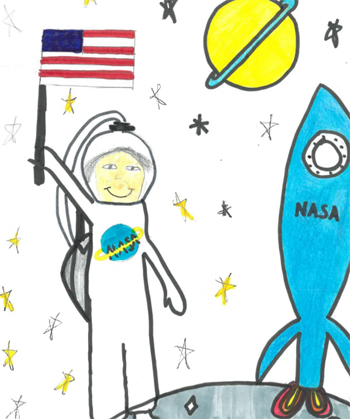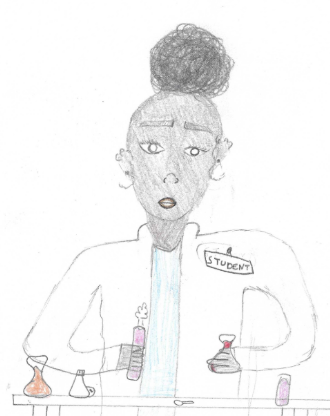
Scientists? “White men in a lab coat” according to primary school children
Flemish primary school children have quite a stereotypical view on scientists. When they are asked to draw ‘a scientist’, they primarily draw white men of middle age with a lab coat and glasses. This is evident from an analysis of 903 drawings of primary school children from all over Flanders.

Draw-a-scientist-test
Lise Reniers, a master student at UGent, executed this research based on the world-famous draw-a-scientist-test. All over the world researchers have analysed the image children have of scientists by means of drawings. This kind of study however, had never been executed in Flanders. For her research, Reniers asked 903 primary school children to draw someone executing science. During the analysis she looked for stereotypical features like the scientist wearing a lab coat or glasses, the presence of research symbols… Reniers also looked at the gender and race of the drawn scientist. She investigated if the image children have of scientists changes depending on which year the children are in. In this way it can be researched if the image that children have of scientists change when they get older.

The inevitable Erlenmeyer flask
The research shows that most children associate a scientist with a white man. They often draw research symbols such as Erlenmeyer flasks and in one third of the drawings the scientist is wearing a lab coat and/or glasses. These are elements belonging to the stereotypical image of scientists. It is interesting that these elements were drawn more when the children were in an older year. This seems to point to a taught stereotypical image of scientist. Remarkable is that most of the boys draw a male scientist. Girls on the other hand draw roughly the same amount of male and female scientists. In terms of specialisation field, chemistry is the most popular: more than half of the drawings contain chemical elements. In second position comes astronomy, followed by biology. The pandemic also has an influence: in one seventh of the drawings there are covid related elements present such as face masks, vaccines or (famous) virologists.

Across the STEM-gap
The results show that the Flemish primary school children have quite a stereotypical image of scientists and that they are taught this image as they get older. This is an important result as this can influence their attitude and self-image which can in its own way influence their choice of study or work. If the stereotypical image of a scientist is a (white) man, then girls (of colour) will identify less with them. Then, the chance is smaller that they will later pick up a STEM (science, technology, engineering, and mathematics) course of study. This can lead to a STEM-gap, which indicates that there are more men than women in STEM-fields, as is the case now. “To counter this effect, it is important that there are enough diverse, anti-stereotypical images in Flemish television programmes, schoolbooks, comic books, tabletop games, educational material…” says Reniers. Currently these are often white men like professor Gobelijn in Jommeke or professor van den Uytleg in the Ketnet-show Dag Sinterklaas. Teachers and parents also play a role in this. It is important that they are aware of the image they present to their children. By creating good and diverse role models in the environment of the child, you increase the likelihood of a positive attitude towards science. In this way we can hopefully someday cross the STEM-gap.
This article was published in Metro.
Lise Reniers (UGent) participated in the Flemish Thesis Price 2021. Read her master thesis on scriptiebank.be/draw-a-scientist.
Almost graduated? The Flemish Thesis Price is yet again looking for the best dissertations and highlights these works in the press. Participants have a chance of winning a publication in Metro and prizes up to 2.500 euros.
Want to participate? Write an interesting journalistic article in Dutch about your research and submit it together with your dissertation on www.scriptieprijs.be.